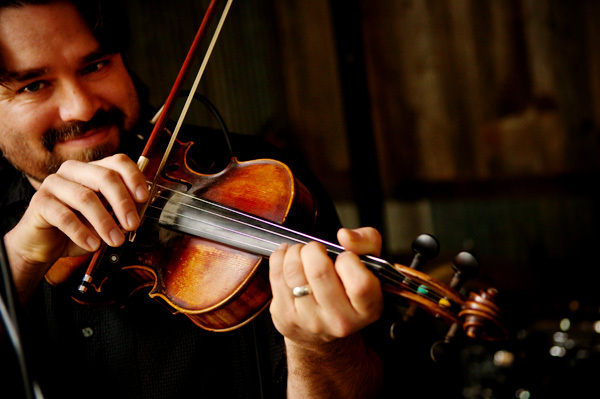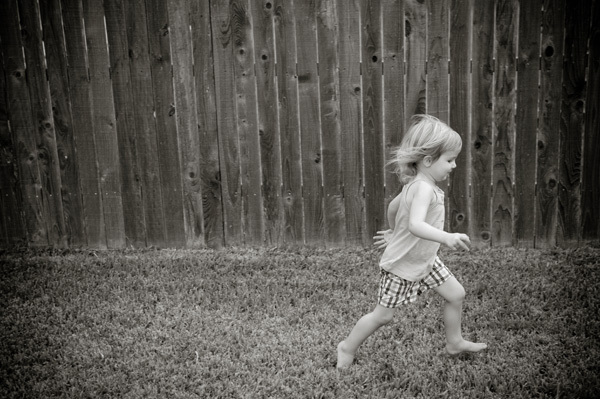Great portrait photography is notoriously difficult to accomplish. People having their photographs taken are often uncomfortable at first, which can result in stilted looking photos; portrait photographers also depend on variables in the surrounding environment, including the weather, to help make a great portrait. There can be so much happening at any given moment the photographer can become distracted and overwhelmed by details. However, you should remember that no matter what happens there are no hard and fast rules for making a great portrait. These tips will help you snap photos beyond the standard headshot for truly amazing prints.
1. Break eye contact.
Traditional portrait photography usually has the subject looking directly into the camera lens, so that they appear to be making eye contact with the viewer of the final photo. With digital photography, you can experiment with breaking eye contact without breaking the bank on film. Try having your subject look at something outside of the frame, or even at another object within the frame, such as their hands. This can create powerful images that really pop with emotion.

Your subject doesn't always have to be looking at the camera. Breaking eye contact gives the portrait a more candid feel.
2. Introduce props.
Using props in portrait photography can create additional interest, and when the prop reflects an aspect of the subject’s personality, the person you are photographing might even feel more comfortable, leading to more candid shots. Props can be meaningful, like family memorabilia, or just fun, like toy balls. These types of portraits are also the most fun to have printed as canvas prints or digital prints for wall art!

What better photo prop than melting ice cream for a fun portrait of the kids?
3. Pay attention to your Composition techniques.
Most portrait photography follows the Rule of Thirds – an imaginary grid of nine blocks, across the center of which one envisions a cross going horizontally and vertically. Following this rule, the main photo has more interest when the subject is not placed in the center of the photo. Experiment with placing your portrait subject off to the side of the frame, or on the bottom of the frame looking up, or even holding the camera at a slight angle so that your subject fills the frame diagonally, for new and interesting portraits. Basically, get your subject out of the middle of the frame and you will instantly have more interesting portraits.

Play with your composition. Take the Rule of Thirds to the extreme and see what you like and don't like.
4. Play with motion.
Not everything in a portrait needs to be in focus. In addition to using selective focus, why not play with motion to add interest and drama to your portrait photography? You can have the subject move, frame the subject against a moving background, or even move the lens of your camera during a shot to introduce interesting blurs and a sense of liveliness to your photos. Shooting with a tripod will help you achieve these effects without additional, unintentional movement that can distract from the composition. Great for sport portraits or for super energetic child portraits.

Capturing your subject in motion is a fun way to convey personality and attitude
5. Learn how to do your own edits.
It’s all too easy to rely on Instagram and similar services to edit your digital photography. While the filters these services offer can be eye popping and have their place, viewers can usually tell the difference between a carefully edited portrait that relies on its own merits and a portrait that has been edited with an instant filter. Taking the time to learn how to do edits in Photoshop, Corel, and other semi-professional to professional level photo editing suites will be more than rewarding, and will help you take your portrait photography to the next level.
 Your subject doesn't always have to be looking at the camera. Breaking eye contact gives the portrait a more candid feel.
2. Introduce props.
Using props in portrait photography can create additional interest, and when the prop reflects an aspect of the subject’s personality, the person you are photographing might even feel more comfortable, leading to more candid shots. Props can be meaningful, like family memorabilia, or just fun, like toy balls. These types of portraits are also the most fun to have printed as canvas prints or digital prints for wall art!
Your subject doesn't always have to be looking at the camera. Breaking eye contact gives the portrait a more candid feel.
2. Introduce props.
Using props in portrait photography can create additional interest, and when the prop reflects an aspect of the subject’s personality, the person you are photographing might even feel more comfortable, leading to more candid shots. Props can be meaningful, like family memorabilia, or just fun, like toy balls. These types of portraits are also the most fun to have printed as canvas prints or digital prints for wall art!
 What better photo prop than melting ice cream for a fun portrait of the kids?
3. Pay attention to your Composition techniques.
Most portrait photography follows the Rule of Thirds – an imaginary grid of nine blocks, across the center of which one envisions a cross going horizontally and vertically. Following this rule, the main photo has more interest when the subject is not placed in the center of the photo. Experiment with placing your portrait subject off to the side of the frame, or on the bottom of the frame looking up, or even holding the camera at a slight angle so that your subject fills the frame diagonally, for new and interesting portraits. Basically, get your subject out of the middle of the frame and you will instantly have more interesting portraits.
What better photo prop than melting ice cream for a fun portrait of the kids?
3. Pay attention to your Composition techniques.
Most portrait photography follows the Rule of Thirds – an imaginary grid of nine blocks, across the center of which one envisions a cross going horizontally and vertically. Following this rule, the main photo has more interest when the subject is not placed in the center of the photo. Experiment with placing your portrait subject off to the side of the frame, or on the bottom of the frame looking up, or even holding the camera at a slight angle so that your subject fills the frame diagonally, for new and interesting portraits. Basically, get your subject out of the middle of the frame and you will instantly have more interesting portraits.
 Play with your composition. Take the Rule of Thirds to the extreme and see what you like and don't like.
4. Play with motion.
Not everything in a portrait needs to be in focus. In addition to using selective focus, why not play with motion to add interest and drama to your portrait photography? You can have the subject move, frame the subject against a moving background, or even move the lens of your camera during a shot to introduce interesting blurs and a sense of liveliness to your photos. Shooting with a tripod will help you achieve these effects without additional, unintentional movement that can distract from the composition. Great for sport portraits or for super energetic child portraits.
Play with your composition. Take the Rule of Thirds to the extreme and see what you like and don't like.
4. Play with motion.
Not everything in a portrait needs to be in focus. In addition to using selective focus, why not play with motion to add interest and drama to your portrait photography? You can have the subject move, frame the subject against a moving background, or even move the lens of your camera during a shot to introduce interesting blurs and a sense of liveliness to your photos. Shooting with a tripod will help you achieve these effects without additional, unintentional movement that can distract from the composition. Great for sport portraits or for super energetic child portraits.
 Capturing your subject in motion is a fun way to convey personality and attitude
5. Learn how to do your own edits.
It’s all too easy to rely on Instagram and similar services to edit your digital photography. While the filters these services offer can be eye popping and have their place, viewers can usually tell the difference between a carefully edited portrait that relies on its own merits and a portrait that has been edited with an instant filter. Taking the time to learn how to do edits in Photoshop, Corel, and other semi-professional to professional level photo editing suites will be more than rewarding, and will help you take your portrait photography to the next level.
Capturing your subject in motion is a fun way to convey personality and attitude
5. Learn how to do your own edits.
It’s all too easy to rely on Instagram and similar services to edit your digital photography. While the filters these services offer can be eye popping and have their place, viewers can usually tell the difference between a carefully edited portrait that relies on its own merits and a portrait that has been edited with an instant filter. Taking the time to learn how to do edits in Photoshop, Corel, and other semi-professional to professional level photo editing suites will be more than rewarding, and will help you take your portrait photography to the next level.